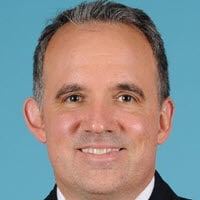In his companion editorial for the Long-Term Oxygen Treatment Trial (LOTT), Dr Magnus Ekström started with quite the understatement: “The fact that we all need oxygen to survive might make the benefit of supplemental oxygen in hypoxemia seem obvious. It is not.”
When physiologic principle collides with clinical medicine, it rarely emerges intact. Oxygen prescriptions weigh down clinical medicine at a cost of $2 billion annually, and that’s just the financial burden. Don’t forget the countless mind-numbing work hours devoted to durable medical equipment coordination. While the impact of oxygen on my patients’ quality of life (QOL) is unclear, I know precisely how it affects mine.
Since 2016, The New England Journal of Medicine has published three high-quality randomized controlled trials (RCTs) on oxygen administration. The LOTT trial examined oxygen supplementation for moderate resting and exertional hypoxia. The INOX trial studied the effect of supplemental nocturnal oxygen, and the recently published REDOX study compared 15 vs 24 hours per day of supplemental oxygen in patients with resting hypoxemia. All of these trials were negative. As such, the indications for oxygen are worthy of review.
The last (and only) RCTs to prove a survival benefit from oxygen were published during the Cold War, in the early 1980s. Researchers made patient calls using rotatory land lines and tabulated data on their Commodore 64s. No doubt they wound down in the evenings watching Welcome Back, Kotter or Magnum, P.I.
Is it time to move on? Of course not. Despite my sarcasm, these nearly 45-year-old RCTs have aged quite well.
Oxygen practice deserves recalibration, though. Too often, physiology and the mortality benefit drive aggressive prescribing. In an editorial to the REDOX trial, the authors state the obvious: Many patients despise oxygen. It’s viewed as a burden, a “ball and chain.” While most (including me) still believe that there’s a mortality benefit, the major RCTs that inform what we know show little effect on anything else — measured QOL, exercise tolerance, and respiratory symptoms didn’t change. The overall data are mixed and potential benefits are often negated by stigma, the size and weight of portable devices, and the limitations to existing technology.
The REDOX editorial suggests we address payment structures so that “the oxygen-delivery system provided to a patient is determined according to medical necessity and not by financial considerations.” This is great and I hope the legislation they reference gets passed.
In the interest of cost-efficiency, though, it’s on the prescribers to tailor our orders to our patients, not their oxygen saturation. This means having a sober discussion about what oxygen will do for them. It will prolong survival if their resting physiology is similar to that of those enrolled in NOTT and MRC and they wear the oxygen at least 15 hours per day. If they desaturate with exertion it will increase their mobility, provided they make an effort to increase activity and they’ve got the musculoskeletal strength to carry or pull their devices. There’s maintenance required, limitations to how long portable systems will last, and an unclear net effect on QOL.
Yes, this means talking to our patients. It also requires education and assistance with health literacy. Certain patients will anchor onto oxygen tighter than their physicians. Assume unrealistic expectations and dispel misconceptions accordingly. If we want Congress to approve bipartisan legislation to align payments with medical necessity, we as physicians must do our part to keep costs down.
Aaron B. Holley, MD, is a professor of medicine at Uniformed Services University in Bethesda, Maryland, and a pulmonary/sleep and critical care medicine physician at MedStar Washington Hospital Center in Washington, DC. He covers a wide range of topics in pulmonary, critical care, and sleep medicine.


